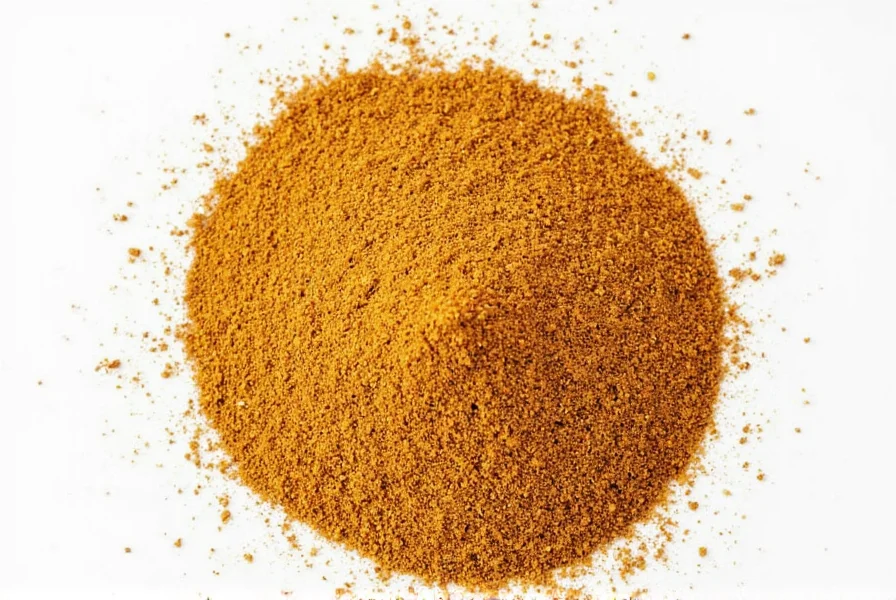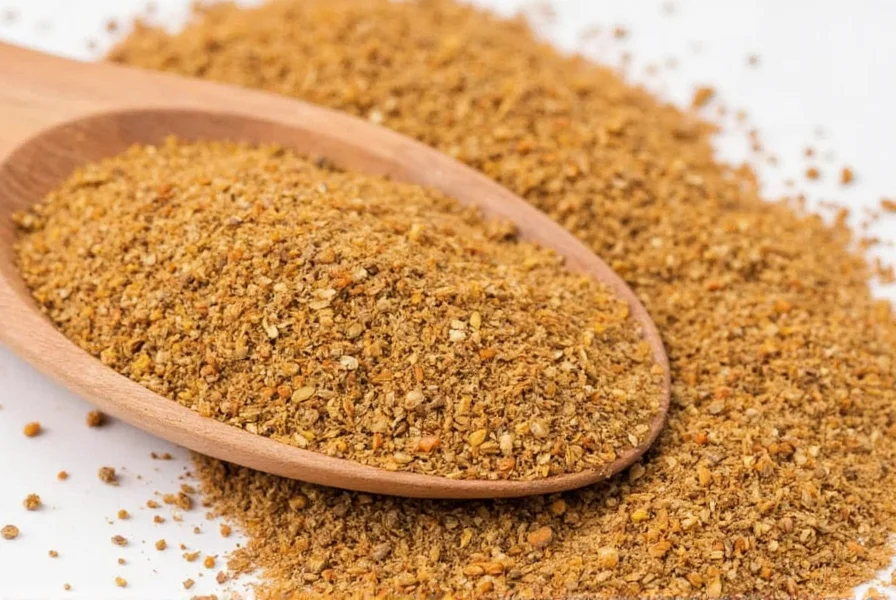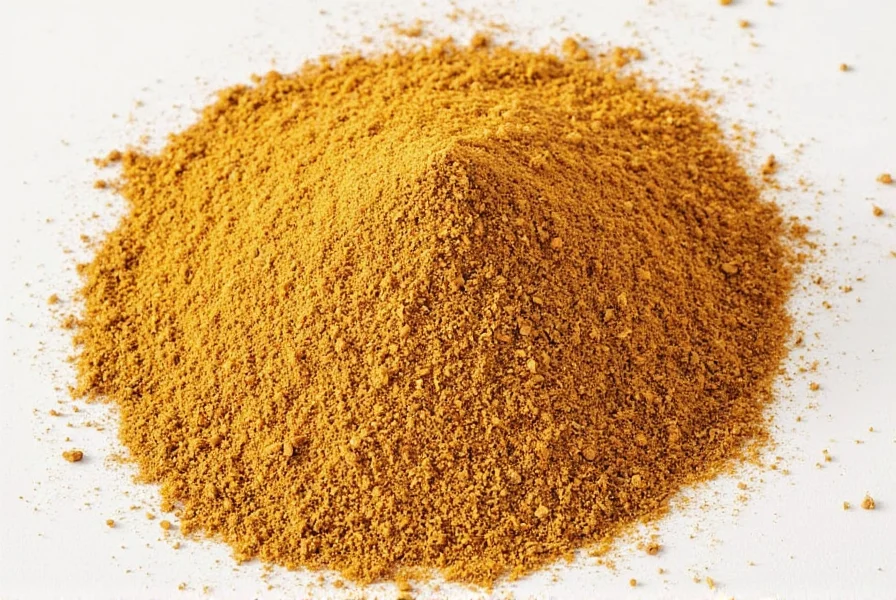Understanding ground cumin's properties transforms your cooking. Unlike whole cumin seeds that need blooming in oil to unlock their full potential, ground cumin delivers instant flavor integration. This convenience comes with trade-offs in shelf life and intensity that every serious home cook should know.
Ground Cumin vs. Whole Cumin Seeds: Key Differences
The fundamental distinction between ground cumin and whole cumin seeds affects both flavor development and storage requirements. Whole seeds maintain their essential oils longer, preserving freshness for 3-4 years when stored properly. Ground cumin, with its increased surface area, begins losing volatile compounds immediately after grinding, with noticeable flavor degradation within 6 months.
Professional chefs often keep whole seeds and grind them as needed using a dedicated spice grinder or mortar and pestle. This freshly ground cumin technique yields noticeably brighter, more complex flavors compared to pre-ground versions. For authentic Indian or Middle Eastern dishes where cumin plays a starring role, this difference proves significant.

Flavor Profile and Culinary Applications
Ground cumin contributes earthy warmth with subtle lemony undertones and a hint of peppery bitterness. When used properly, it enhances rather than dominates dishes. Understanding when to add ground cumin in cooking separates adequate from exceptional results.
For maximum flavor integration, add ground cumin early in the cooking process to allow its compounds to meld with other ingredients. In tomato-based sauces or stews, incorporate it after sautéing aromatics but before adding liquids. The acid in tomatoes helps extract and distribute cumin's flavor compounds throughout the dish.
| Cuisine Type | Recommended Usage | Flavor Pairings |
|---|---|---|
| Mexican | 1-2 tsp per pound of meat | Chili powder, oregano, garlic |
| Indian | 1.5-3 tsp per dish | Coriander, turmeric, ginger |
| Middle Eastern | 1-2 tsp per recipe | Cinnamon, cardamom, sumac |
Proper Storage Techniques for Maximum Freshness
The best way to store ground cumin involves three critical factors: darkness, cool temperatures, and airtight containment. Exposure to light accelerates the breakdown of cumin's essential oils, while heat and oxygen cause rapid flavor deterioration.
Transfer store-bought ground cumin from its flimsy paper container to an opaque glass jar with a tight-sealing lid. Keep it in a cool, dark pantry away from your stove or oven. For extended shelf life, refrigeration in an airtight container works well, though condensation can become an issue when removing the container repeatedly.
Check your ground cumin's freshness by rubbing a small amount between your fingers and smelling it. Fresh cumin should release a strong, warm aroma. If it smells faint or musty, it's time for replacement. Properly stored, ground cumin maintains acceptable quality for 6-12 months, though peak flavor occurs within the first 3-4 months.
Effective Substitutions When You Run Out
Understanding ground cumin substitution options prevents recipe disasters. While no perfect replacement exists, several alternatives work in specific contexts:
- Whole cumin seeds (toasted and ground): Use 1.5 times the amount of seeds as you would powder, then grind immediately before use
- Coriander: Provides similar earthiness but lacks cumin's distinctive warmth (use 75% of cumin amount)
- Garam masala: Contains cumin among other spices (use half the amount)
- Chili powder: Only suitable for Mexican dishes where cumin is already present in the blend
Never substitute caraway seeds for cumin in savory dishes—they share some chemical compounds but create distinctly different flavor profiles that confuse rather than complement.
Common Mistakes to Avoid with Ground Cumin
Even experienced cooks make critical errors with ground cumin that diminish their dishes. The most frequent ground cumin mistakes include:
- Adding it too late in cooking, resulting in raw, dusty flavor
- Using stale product that's lost its volatile compounds
- Burning it during sautéing (cumin scorches easily at high heat)
- Overusing it, creating bitter, overwhelming results
For optimal results, always bloom ground cumin in oil or fat for 30-60 seconds before adding liquids. This simple step transforms its flavor from flat to complex. Start with smaller amounts than recipes suggest—you can always add more, but you can't remove excess.
Practical Applications Across Cuisines
Mastering how to use ground cumin in cooking requires understanding its role in different culinary traditions. In Mexican cuisine, it forms the backbone of chili powders and adobo blends, working synergistically with smoked paprika. Indian recipes often combine it with coriander and turmeric in garam masala variations.
For Western applications, try adding 1/4 teaspoon to roasted vegetables, hummus, or even chocolate desserts for unexpected depth. The key is balance—cumin should enhance, not dominate. When experimenting with cumin powder benefits beyond flavor, note its traditional digestive properties that make it valuable in bean-heavy dishes.

Frequently Asked Questions
Can I substitute ground cumin for cumin seeds in recipes?
Yes, but use 3/4 teaspoon ground cumin for every 1 teaspoon of whole seeds. Remember that ground cumin delivers immediate flavor while seeds require blooming in oil first. For best results in spice-heavy dishes, toast whole seeds briefly then grind them yourself.
How can I tell if my ground cumin has gone bad?
Stale ground cumin loses its strong aroma and may smell musty or dusty. Perform the rub test: place a small amount in your palm, rub hands together, and smell immediately. Fresh cumin should produce an intense, warm scent. If barely noticeable, replace it. Properly stored, ground cumin lasts 6-12 months.
What's the best way to revive stale ground cumin?
Unfortunately, you cannot truly revive stale ground cumin as the volatile flavor compounds have evaporated permanently. Your best option is to use it in strongly flavored dishes where its diminished presence won't be noticeable, or incorporate it into spice blends with fresher spices. For critical recipes, always use freshly ground cumin from whole seeds.
Does ground cumin have any health benefits?
Ground cumin contains antioxidants and may aid digestion, particularly when consuming legumes. Studies suggest potential anti-inflammatory properties and blood sugar regulation benefits, though these effects are modest. The culinary value of cumin far exceeds any marginal health benefits—it's primarily used for flavor enhancement rather than medicinal purposes.
Why does my ground cumin taste bitter?
Bitter ground cumin usually results from one of three issues: it's stale and oxidized, you've used too much, or it was burned during cooking. Cumin scorches easily—always cook it over medium-low heat for no more than 60 seconds. If your dish tastes bitter, add a small amount of acid (lemon juice or vinegar) or sweetness (honey or sugar) to balance the flavor.











 浙公网安备
33010002000092号
浙公网安备
33010002000092号 浙B2-20120091-4
浙B2-20120091-4